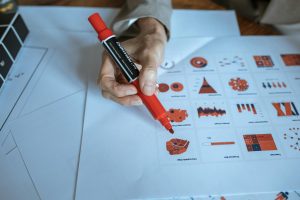Innovative Use of Virtual Reality in Classroom Instruction
In today’s digital age, it’s no surprise that technology is continuously transforming the classroom experience. From interactive whiteboards to online learning platforms, educators are always finding new ways to engage and educate their students. One of the most innovative advancements in classroom instruction is the use of virtual reality (VR). This cutting-edge technology has the ability to transport students to different times, places, and even worlds, providing an immersive and transformative learning experience. In this article, we will explore the innovative use of virtual reality in classroom instruction and how it is revolutionizing education.
The Power of Virtual Reality in the Classroom
Virtual reality is a computer-generated simulation of a three-dimensional environment that can be interacted with in a seemingly real or physical way. It has been primarily associated with entertainment and gaming, but its potential for education is becoming increasingly evident. VR has the power to engage students in a new and exciting way, making learning more immersive and memorable. By using VR, educators can break down the barriers of the traditional classroom and bring their lessons to life.
Enhancing Learning with Virtual Reality
1. Expanding Possibilities
One of the most significant advantages of using VR technology in the classroom is its ability to expand possibilities and overcome limitations. With VR, students can explore places that would have otherwise been difficult or impossible to visit. For example, students can visit historical sites, explore ancient civilizations and even experience significant events in history. These experiences can enhance their understanding and bring their lessons to life in a way that textbooks or lectures cannot.
2. Immersive Learning Experience
Education through virtual reality provides students with an immersive learning experience that stimulates their senses and makes learning more interactive. Instead of passively listening to a lecture or reading from a book, students are actively engaging in their lessons, making them more likely to retain the information. This hands-on approach to learning can also help students develop critical thinking and problem-solving skills.
3. Catering to Different Learning Styles
Every student is different, and each has their own learning style. VR technology can cater to these different learning styles by providing a variety of ways for students to engage with the content. Visual learners can benefit from the immersive 3D environments, while kinesthetic learners can physically interact and manipulate objects. By incorporating VR into their lessons, educators can ensure that every student has a chance to learn in a way that suits them best.
4. Making Learning Fun
One of the biggest challenges for educators is to keep students engaged and motivated throughout their lessons. VR technology has the power to make learning fun and exciting, encouraging students to actively participate and learn without even realizing it. By gamifying lessons and providing interactive experiences, VR can make lessons more enjoyable for students, leading to a more positive learning experience.
Practical Applications of VR in the Classroom
1. Science
Virtual reality can revolutionize the way science is taught in schools. Through VR, students can experience scientific phenomena in a virtual environment, allowing them to understand complex concepts in a more tangible way. For example, students can explore the solar system, witness the water cycle, or even travel through the human body to understand how it works.
2. History
VR can also have a significant impact on how history is taught in the classroom. Instead of reading about historical events, students can virtually visit these places and experience them first-hand. By transporting students to different time periods, they can gain a deeper understanding and empathy for significant events in history.
3. Geography
For geography lessons, VR can provide a more immersive and interactive learning experience. By using VR, students can visit different countries and cultures, experience different landscapes and even simulate natural disasters. This hands-on approach to learning can enhance students’ geographical knowledge and understanding of the world.
The Future of Virtual Reality in Education
The potential for virtual reality in education is vast and continues to grow. As the technology advances and becomes more accessible, its use in the classroom will become more prevalent. With VR, educators can transform the traditional classroom into a dynamic and engaging environment, encouraging students to learn in new and exciting ways.
In conclusion, the innovative use of virtual reality in classroom instruction is transforming education and providing students with unparalleled learning opportunities. By breaking down barriers, enhancing experiences, and making learning more interactive and fun, VR has the power to revolutionize education and shape the future of learning. As technology continues to advance, the possibilities of VR in the classroom are endless, making it an invaluable tool for educators and students alike.










